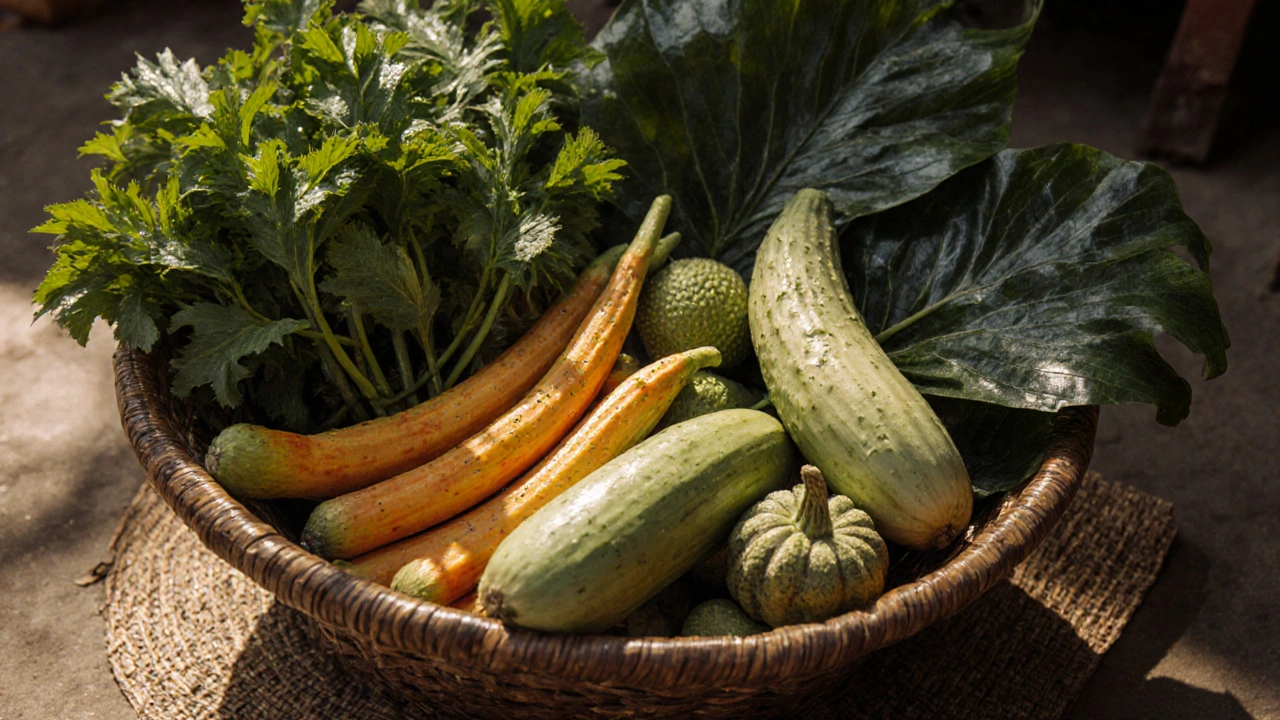Discover India's native vegetables, why they matter, and how to grow them. Get climate tips, a handy comparison table, and step‑by‑step planting guidance.
Vegetables of India: Top Varieties, Growing Tips, and Why They Matter
When we talk about vegetables of India, the core food crops that feed millions of households across the country, shaped by climate, culture, and centuries of farming. Also known as Indian kitchen crops, these plants aren’t just food—they’re part of daily life, festivals, and family meals. From the humble potato to the spicy brinjal, these vegetables grow in backyards, balconies, and vast farms, feeding the nation year-round.
The Brinjal, a staple vegetable in Indian kitchens, often called the king of vegetables for its versatility and deep cultural roots. Also known as eggplant, it thrives in India’s warm climate and appears in curries, stir-fries, and pickles across every state. Then there’s the tomato, a fruit-turned-vegetable that’s essential in chutneys, dals, and gravies, and grows fast in most Indian regions. It’s one of the most widely grown vegetables in home gardens, especially in places with 6–8 hours of sun. And if you need food quickly, you’ll find fast-growing vegetables, crops like radish, spinach, and beans that go from seed to plate in under 30 days. These are the heroes of urban gardens and small farms where time and space are limited. These aren’t random plants—they’re chosen for resilience, taste, and how well they fit India’s monsoon cycles and dry spells.
What makes these vegetables special isn’t just how they taste, but how they’re grown. Indian farmers and home gardeners use compost, natural pest control, and smart watering—often with drip systems—to make the most of limited water and soil. You’ll find guides on fixing clogged drip emitters, improving dense soil with compost, and choosing the right balcony orientation for sun-loving crops like tomatoes and brinjal. Even the materials you use matter: styrofoam in raised beds? Some swear by it; others avoid it. The community debates it all, because growing food here isn’t just about planting—it’s about adapting.
Whether you’re growing on a terrace in Mumbai, a backyard in Punjab, or a small plot in Kerala, the vegetables of India respond to local conditions. They don’t need fancy tools—just observation, timing, and a little patience. Below, you’ll find real guides from real gardeners: how to protect your zinnias from rabbits, why rice isn’t a perennial, and which plants bloom nonstop in India’s heat. These aren’t theory pages. They’re practical, tested, and made for the soil you’re standing on.
